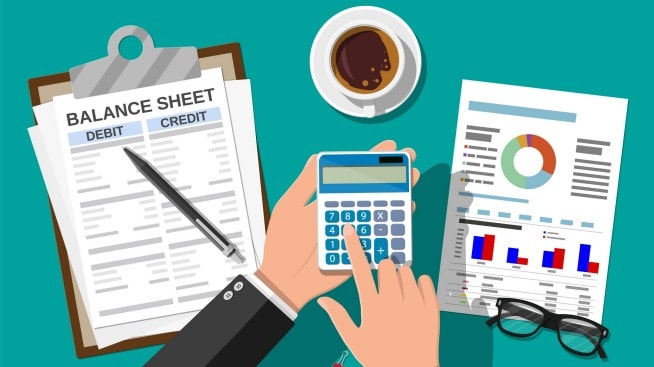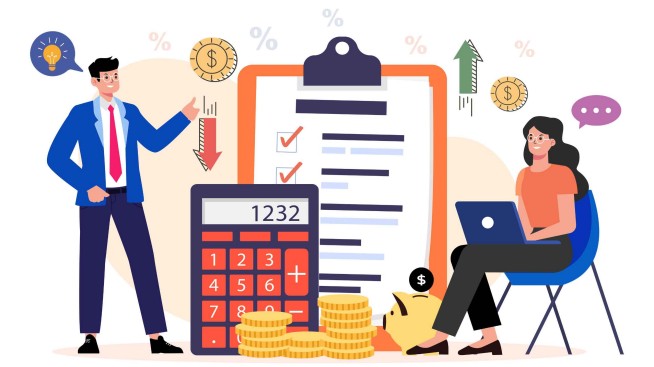How to read a credit report: Beginners guide

How to read a credit report
Whether you've just opened your first credit card account or have been using multiple accounts for years, you may not necessarily be aware of all the important information that comes with your credit report.
When you first get a credit report, you may feel a little daunted by the facts, numbers and personal information contained in the document. There's plenty for you to digest. Have no fear, we'll help guide you through the report section by section, breaking things down and providing you with an explanation on what your credit report is all about.
In this article, you'll learn:
- What a credit report is
- What's on a credit report
- Why your credit report is important
- Monitoring your credit
What is a credit report?
A credit report is a document that contains financial information, such as bill payment history, loans and current debt as well as your personal information, such as name and birthdate. The Fair Credit Reporting Act (FCRA) requires each of the three major credit bureaus — Experian™, Equifax® and TransUnion® — to provide you with a free credit report once a year upon request. You can also access your Experian™ credit report through Chase Credit Journey® or get a free annual credit report at annualcreditreport.com.
Card issuers, loan lenders and potential employers may look at your report to learn about your experience as a borrower. A credit report assists them in determining whether you should be granted credit—and at what cost (interest rates and more). The information in your credit report is also used in the calculation of your credit score and to verify your identity.
For example, a credit card issuer may want to examine your credit report to help determine your credit limit and annual percentage rates (APRs). Additionally, if you're interviewing for a job, you could be asked to complete a background check in which your potential employer runs a pre-employment credit check. They may also do this to help verify your identity.
Credit reports serve plenty of purposes, but don't confuse this with your credit score. While the two are often talked about hand-in-hand, there are some differences.
Credit report vs. credit score
It can be easy to confuse credit reports with credit scores. Your credit score and credit report are related, but they are not the same. Your credit score is a three-digit number that reflects your credit health to potential lenders. Factors like your payment history, credit mix and more are used to help determine this number. Card issuers and loan lenders may look at your credit score in addition to your credit report to help determine your creditworthiness and interest rates.
Your credit report, on the other hand, doesn't include your credit score, but rather the credit activity that is used to calculate your credit score. The report, which includes information in regard to your credit, is used to calculate your credit score. It provides a comprehensive view of your credit history and lists your current accounts. Simply put, without a credit report, there can be no credit score. It provides the pool of data that a credit score is built on.
Let's explore the information included in your credit report.
Personal information
The first thing you may notice on your credit report is your personal information. This information may include:
- Your name
- Birthday
- Your mailing address (and past addresses)
- Your Social Security number (SSN)
Make sure that these items are accurate, as there could be room for error. You may also want to take note of any updates you need to make, like name or address changes. This should be done by contacting the credit bureau that you received your credit report from.
Credit history and accounts
As the name suggests, your credit report also shows your credit history. This includes loans, credit card accounts, store cards and other bank account information. You may see each of the accounts with details including:
- Account name
- Account number
- Recent balances
- Date opened
- Status of the account (for example, inactive or closed)
- Credit limits
- Monthly payment
- Recent payment amounts
- Responsibility/responsible party (you or potentially you and another person, such as for a co-signed loan)
Your report will also list hard inquiries, which occur when a creditor checks your credit as part of an application process. They last for about 2 years on your report.
Additionally, you can view derogatory items on your credit report, which include late payments, collections, charge-offs and more. These items can last up to 7 years or potentially more on your credit report.
Public records
In the past, credit reports used to include public records such as arrests. However, according to Experian, the only public record that appears on credit reports now are bankruptcy filings. Depending on the type of bankruptcy (or "chapter") you've filed, bankruptcy can remain on your report anywhere from 7-10 years.
Why are credit reports important?
Credit reports may seem uninteresting and rather dry. It also may seem pointless to review information that you may already be aware of, especially if you keep good track of your bank activity. However, credit reports are essential for monitoring your credit. While much of the information should look familiar to you, there could be an old account that you don’t remember and that could be impacting your score. What’s more, it can be possible for there to be errors on your credit report. If that's the case, you should dispute them as soon as possible.
For example, if someone has stolen your personal data and has applied for, or even opened, an account in your name, your score could be affected by a hard inquiry and by the new account.. If you review your report in detail, you can keep an eye out for any errors or potential fraud so that you can proactively protect your credit score. If you want to proactively keep your information safe, you can sign up for credit and identity monitoring services when you enroll in Chase Credit Journey.
Additionally, credit reports provide the kind of full transparent visibility needed to understand your credit history. Credit reports are an accessible tool you can use to improve your understanding of credit and establishing creditworthiness. By seeing your credit and other financial activity listed out in a single document, you may be able to track patterns and make adjustments to help improve your score.
Monitor your credit with Chase Credit Journey
Monitoring your credit by checking your annual credit report is a proactive way of protecting your credit and credit score. When you enroll in Chase Credit Journey, you can monitor your updated credit score and review your credit report, provided by Experian, for potential errors. You will also see how your credit history has impacted your financial health.
You can catch potential errors on your credit report provided by Experian™ credit report early on and see how your current and past credit history has impacted your financial health. For example, if you've recently opened up a credit card account, you could see a hard inquiry listed on your report. That could be helpful information if you're wondering why your credit score recently dipped by a few points—a common, temporary effect of a hard inquiry.
Monitoring your credit and credit score can be a simple but effective way of protecting your financial health. When you enroll in Chase Credit Journey, you'll have the ability to enroll in credit monitoring services. This allows you to get alerts whenever there are changes to your credit score or major credit card account changes. You can see how your activity is affecting your score as well as keep an eye out for any potential fraud or errors. Having this free tool at your fingertips can empower you to make wise decisions when it comes to your financial fitness.



